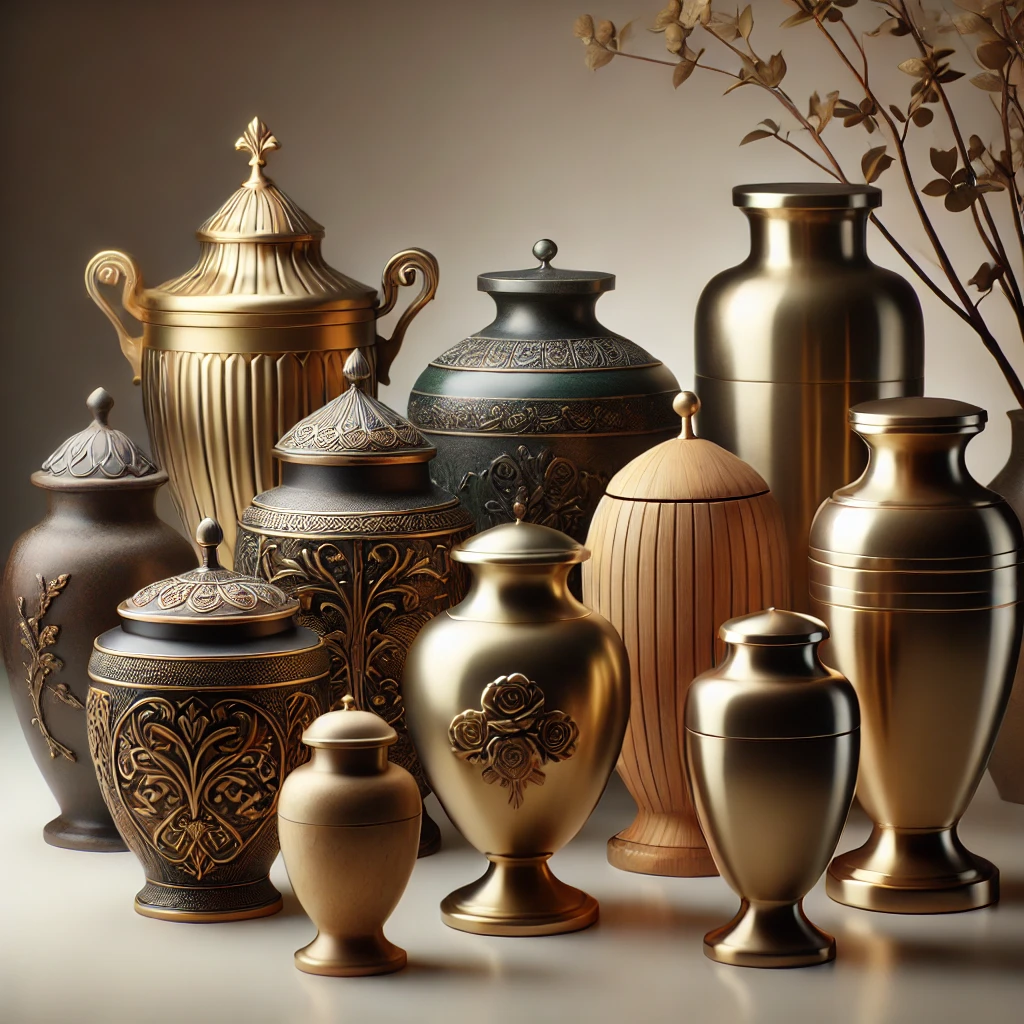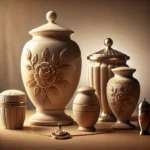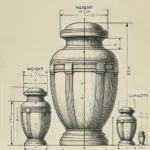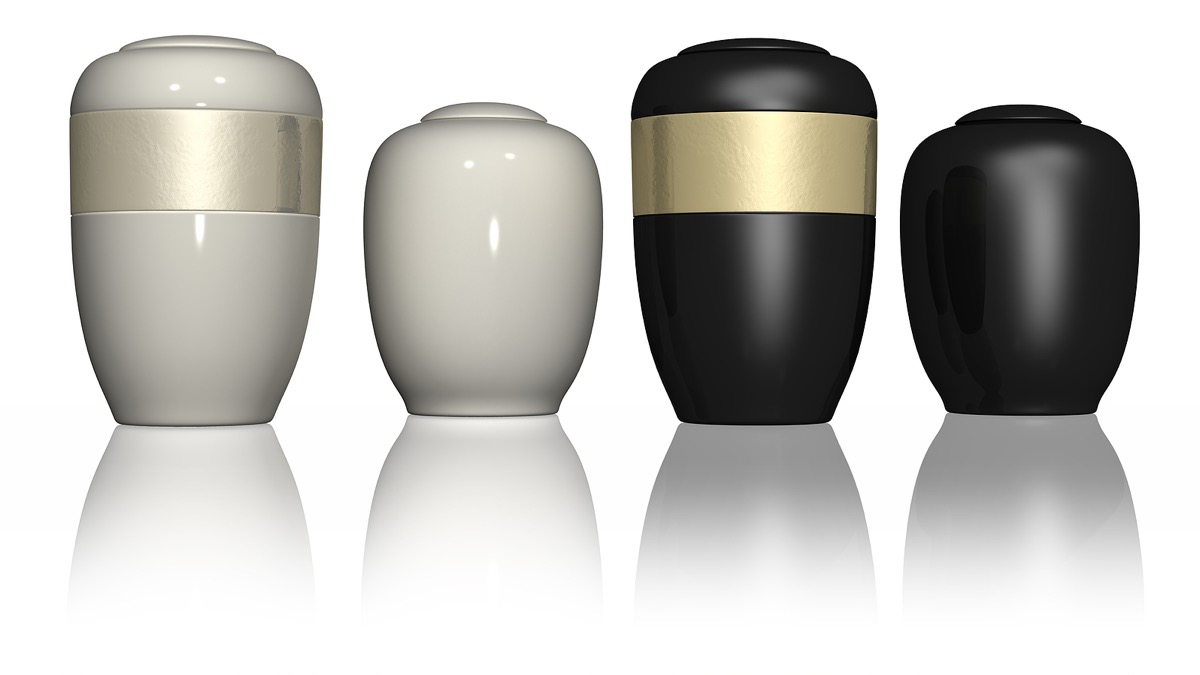Choosing a cremation urn can be a deeply personal decision, whether you’re buying for a loved one or planning ahead for yourself. Understanding the variety of urns available—including sizes, styles, materials, and costs—can make the process easier and more meaningful. This guide covers everything you need to know to make an informed choice when purchasing a cremation urn.
Understanding Urn Sizes
Cremation urns come in various sizes, and it’s important to choose one that is appropriately sized for the intended purpose. The capacity of an urn is measured in cubic inches, with 1 cubic inch generally corresponding to 1 pound of body weight before cremation. Here are the common urn sizes:
Standard Urns (Adult Urns):
- Capacity: 180 to 220 cubic inches (suitable for an adult weighing between 180-220 pounds).
- Purpose: These are full-size urns meant to hold the cremains of one adult.
Companion Urns:
- Capacity: 350-450 cubic inches.
- Purpose: Designed to hold the ashes of two individuals, often couples who wish to be together after passing.
Keepsake Urns:
- Capacity: 1-25 cubic inches.
- Purpose: These small urns are meant to hold a portion of the ashes, allowing multiple family members to keep part of the remains.
Infant or Child Urns:
- Capacity: 30-80 cubic inches.
- Purpose: Designed for infants or children.
Pet Urns:
- Capacity: Varies based on the size of the pet.
- Purpose: Specifically designed to hold the ashes of pets, these can range in size based on the pet’s weight.
Urn Styles and Types
Cremation urns are available in a wide range of styles and materials, allowing you to choose one that reflects the personality and preferences of the deceased or your personal taste. Here are the most common styles:
Traditional Urns:
- Material: Commonly made from brass, bronze, or wood.
- Design: Classic vase-like shape, often simple but elegant, with subtle engravings or details.
Biodegradable Urns:
- Material: Made from eco-friendly materials like paper, clay, or wood pulp.
- Purpose: These urns are designed to break down naturally and are ideal for burial at sea or in the ground.
Keepsake Urns:
- Material: Available in metal, glass, ceramic, and wood.
- Purpose: Used to store small amounts of cremains and can be kept in the home or worn as jewelry (like lockets or pendants).
Personalized/Custom Urns:
- Material: Available in various materials, often wood, stone, or metal.
- Purpose: Can be customized with names, dates, images, or quotes. Many online retailers offer custom engraving and etching options.
Cultural or Religious Urns:
- Design: These urns may feature symbols or designs specific to certain faiths or cultural traditions, such as crosses, prayer beads, or traditional motifs.
Sculptural Urns:
- Material: Often made of metal, stone, or ceramic.
- Design: Designed to look like pieces of art, these urns can be abstract or shaped like animals, figures, or meaningful symbols.
Urns for Display:
- Material: Typically wood, marble, or brass.
- Design: These urns are designed to be displayed in a home or niche and often come with elegant details or finishes.
Urn Materials
Cremation urns come in many materials, each with its own set of pros and cons:
Metal (Brass, Bronze, Steel, Aluminum):
- Durability: Highly durable and long-lasting.
- Appearance: Elegant and traditional, often with engravings.
- Price: Can range from mid-range to high-end.
Wood (Oak, Mahogany, Cherry, Pine):
- Durability: Solid and durable, though not as long-lasting as metal.
- Appearance: Warm, natural, and often used for custom designs.
- Price: Ranges from affordable to mid-range, depending on wood type.
Ceramic:
- Durability: Fragile and prone to breaking, but visually beautiful.
- Appearance: Available in various colors, patterns, and designs.
- Price: Mid-range to high-end.
Marble or Stone:
- Durability: Extremely durable and suitable for both indoor and outdoor display.
- Appearance: Elegant and timeless, often with a polished finish.
- Price: Higher price range, especially for custom-carved urns.
Glass:
- Durability: Fragile but unique in appearance.
- Appearance: Hand-blown glass urns offer a unique, one-of-a-kind aesthetic.
- Price: Typically in the mid to high-end range.
Biodegradable Materials:
- Durability: Meant to decompose, so not long-lasting.
- Appearance: Simple but meaningful, often with minimal decoration.
- Price: Typically affordable, ranging from $50 to $150.
How Much Does a Cremation Urn Cost?
The price of a cremation urn varies widely based on material, size, style, and customization options. Here’s a general breakdown:
Basic Urns: $50 to $200.
- Typically made of simple materials like wood or ceramic.
- Often unadorned or with minimal detailing.
Mid-Range Urns: $200 to $500.
- Made from high-quality materials such as metal, wood, or marble.
- Often include custom engravings or more intricate designs.
High-End or Custom Urns: $500 to $3,000+.
- These include personalized urns, hand-blown glass, custom sculptures, or artist-designed pieces.
- Often made from premium materials like bronze, marble, or hand-crafted wood.
Where to Buy Cremation Urns
Cremation urns can be purchased from a variety of retailers, both online and in physical stores. Each has its own advantages, depending on what you’re looking for:
Funeral Homes:
- Pros: Convenient as part of cremation services, and many funeral homes offer guidance in choosing an urn.
- Cons: Typically more expensive due to higher markups.
Online Retailers:
- Websites:
- Everlasting Memories: Offers a wide selection of urns, including custom keepsakes.
- Cremation Solutions: Specializes in custom and unique urns, including biodegradable options.
- Perfect Memorials: A large retailer with a wide range of urns for humans and pets.
- Pros: Competitive pricing, more selection, and customization options.
- Cons: You won’t be able to see the urn in person before buying.
Specialty Stores and Artists:
- Pros: Many artists and boutique stores offer custom, one-of-a-kind urns.
- Cons: Higher prices and potentially longer wait times.
Cremation Providers:
- Many cremation service providers offer urns as part of their packages, allowing you to purchase everything in one place.
How to Choose the Right Urn
- Determine the Size: Make sure the urn is appropriately sized based on the weight of the deceased.
- Consider the Material: Choose a material that aligns with where the urn will be kept (indoors, outdoors, burial, etc.) and the level of durability you want.
- Personalization: If you want to add engravings or custom details, be sure to check that the urn you select allows for customization.
- Think About Display or Burial: Decide if the urn will be displayed, kept in a columbarium niche, or buried. This will influence the material and design you choose.
A Personal Decision
Purchasing a cremation urn is a personal decision, and it’s important to choose one that feels meaningful and fitting. Whether you want a simple and understated design, a piece of art, or an eco-friendly option, there are many choices to suit your preferences. Take your time, compare options, and make sure the urn you select honors the memory of your loved one in the way you desire.







